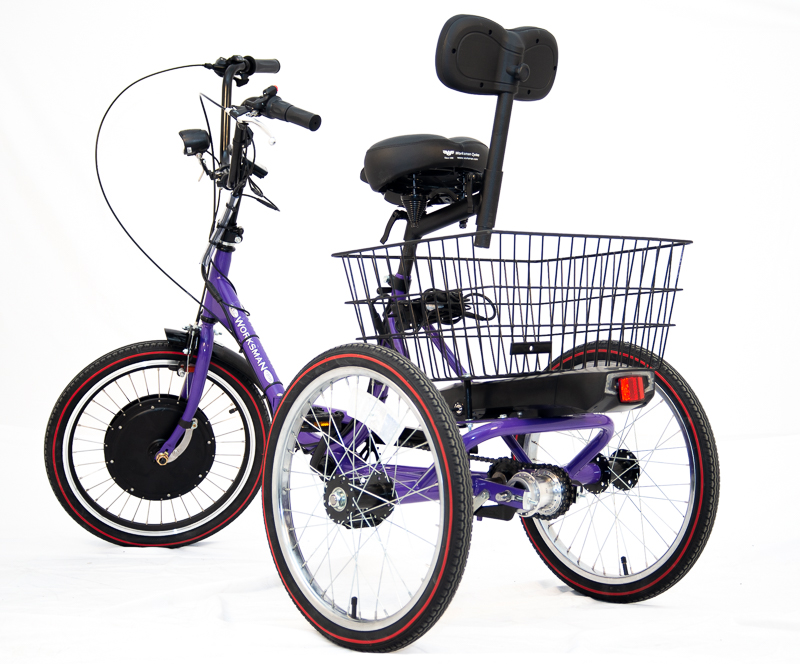Adult Electric Tricycle Batteries: What You Need to Know
 One of the most important factors to consider when shopping for an electric tricycle for adults is the battery. As the primary power source, the battery influences your riding experience by determining range, speed, and performance. At Worksman Cycle, we understand that many shoppers may be unfamiliar with electric tricycle batteries, so we want to help you make an informed decision based on your needs.
One of the most important factors to consider when shopping for an electric tricycle for adults is the battery. As the primary power source, the battery influences your riding experience by determining range, speed, and performance. At Worksman Cycle, we understand that many shoppers may be unfamiliar with electric tricycle batteries, so we want to help you make an informed decision based on your needs.
Battery Types and Sizes: What Should You Look For?
Electric tricycles, including the ones we offer at Worksman Cycle, commonly use lithium-ion batteries. These are popular for their light weight, efficiency, and longer lifespan. Unlike traditional lead-acid batteries, lithium-ion batteries are more compact and can deliver consistent power over time. When choosing a battery, it's crucial to consider its capacity, often measured in watt-hours (Wh). For example, depending on terrain and rider weight, a 500Wh battery may allow you to travel up to 40 miles on a single charge. This is ideal for those using their tricycle for longer commutes or extended recreational rides.
How Long Will the Battery Last?
A common question is, "How long will my battery last?" Most lithium-ion batteries can last 3 to 5 years with proper care, translating to about 1,000 complete charge cycles. A complete charge cycle is the process of charging the battery from a low level to total capacity. You're using one entire cycle if you regularly charge your battery from 20% to 100%. If you only charge from 50% to 100%, that's half a cycle, which can extend the battery's lifespan. For example, a rider who charges the battery lightly after each short trip will likely see their battery last longer than someone who consistently drains it down to empty before recharging.
Charging and Maintenance: How to Get the Most from Your Battery
To extend the life of your battery, it's essential to follow proper charging practices. At Worksman Cycle, we recommend avoiding complete discharge, which strains the battery and reduces its longevity. Instead, aim to charge when the battery reaches around 20-30%. Additionally, removing the battery from the charger once it's fully charged will prevent overcharging, which can also damage the battery over time.
Another critical factor is temperature. Lithium-ion batteries perform best in moderate temperatures. If your tricycle is stored in a garage or outdoors, be mindful of extreme heat or cold. For example, charging a battery in freezing conditions can permanently damage it, while storing it in direct sunlight may cause overheating and capacity loss.
How Does the Rider's Weight and Terrain Affect Battery Performance?
Battery life isn't just about the number of charges; usage plays a significant role, too. Those who frequently ride on hilly terrain or heavier riders will notice that their battery drains faster. For instance, if you're using your electric tricycle for a smooth, flat city commute, your battery will last longer than someone riding uphill or against strong winds. That's why matching the battery size to your specific needs is essential. If you live in a hilly area or plan on carrying additional cargo, a higher-capacity battery will ensure your electric tricycle performs consistently without frequent recharges.
Choosing the Right Battery for Your Electric Tricycle for Adults
When narrowing down your options for an electric tricycle, ask yourself how you plan to use the bike. Do you need more extended range for daily commuting or just short trips around town? At Worksman Cycle, we offer tricycles with various battery capacities to suit different riding styles. It's important to note that a larger battery will add more weight to the tricycle, which can affect its balance and handling.
A smaller, more affordable battery may be sufficient if you use your tricycle for leisurely weekend rides. However, suppose you're relying on it for commuting or longer rides. In that case, it's worth investing in a larger battery to avoid frequent recharging while also considering the added weight and its impact on your riding experience.







